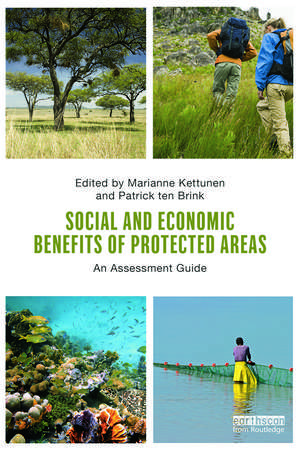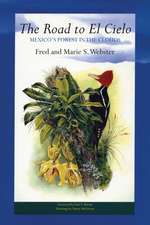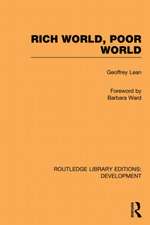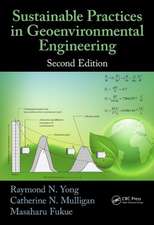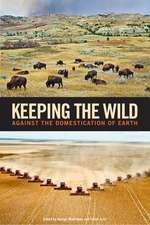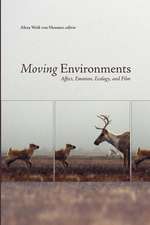Social and Economic Benefits of Protected Areas: An Assessment Guide
Editat de Marianne Kettunen, Patrick ten Brinken Limba Engleză Paperback – 13 aug 2013
This book offers a comprehensive introduction to the socio-economic benefits of PAs and PA networks and provides step-by-step practical guidance on identifying, assessing and valuing the various ecosystem services and related benefits provided by PAs. It also aims to improve the communication of PA benefits to different stakeholders and the general public. It is shown that identifying and valuing the socio-economic benefits of PAs can be beneficial for several reasons. Demonstrating socio-economic importance of a protected site can significantly increase political and stakeholder support for the site and resolve conflicts between different interest groups. This can lead to positive changes in policies and decision-making. Insights on PA benefits are also needed to identify a combination of actions and land use practices that best support the sustainable and equitable utilisation of these benefits, while retaining a site’s conservation goals. Finally, demonstrating different benefits can help to discover alternative and sustainable sources for financing the management of PAs.
| Toate formatele și edițiile | Preț | Express |
|---|---|---|
| Paperback (1) | 431.25 lei 6-8 săpt. | |
| Taylor & Francis – 13 aug 2013 | 431.25 lei 6-8 săpt. | |
| Hardback (1) | 767.88 lei 6-8 săpt. | |
| Taylor & Francis – 28 aug 2013 | 767.88 lei 6-8 săpt. |
Preț: 431.25 lei
Preț vechi: 507.35 lei
-15% Nou
Puncte Express: 647
Preț estimativ în valută:
82.55€ • 89.69$ • 69.38£
82.55€ • 89.69$ • 69.38£
Carte tipărită la comandă
Livrare economică 21 aprilie-05 mai
Preluare comenzi: 021 569.72.76
Specificații
ISBN-13: 9780415632843
ISBN-10: 0415632846
Pagini: 368
Ilustrații: 58 black & white illustrations, 34 black & white tables
Dimensiuni: 156 x 234 x 20 mm
Greutate: 0.57 kg
Ediția:1
Editura: Taylor & Francis
Colecția Routledge
Locul publicării:Oxford, United Kingdom
ISBN-10: 0415632846
Pagini: 368
Ilustrații: 58 black & white illustrations, 34 black & white tables
Dimensiuni: 156 x 234 x 20 mm
Greutate: 0.57 kg
Ediția:1
Editura: Taylor & Francis
Colecția Routledge
Locul publicării:Oxford, United Kingdom
Public țintă
Postgraduate and ProfessionalCuprins
Introduction 1. Introduction, Objectives and Approach Part 1: Contextual Guidance 2. Protected Areas: Their Values and Benefits 3. General Principles for Estimating the Socio-economic Value of Benefits Provided by Protected Areas Part 2: Practical Guidance Step I. A Scoping Assessment of Possible Benefits 4. Scoping Assessment of Benefits Provided by Protected Areas Annex 1. Scoping Assessments of Benefits Provided by Protected Areas – an Example of Application 5. Deciding which Benefits to Analyse in More Detail Step II. Detailed Methodological Guidance to Estimating Benefits 6. Provisioning Services and Related Goods Annex 2. Step by Step Guidance: Valuation of Biodiversity Resources 7. Regulating Services and Related Goods Annex 3. Step by Step Guidance: Water Related Ecosystem Services Annex 4. Step by Step Guidance: Climate Change Mitigation (Carbon Storage and Sequestration) 8. Cultural Services and Related Goods Annex 5. Step by Step Guidance: Ttourism, Rrecreation and Oother Cultural Benefits 9. Appreciating the Value of Supporting Service 10. Wider Socio-economic Benefits 11. Costs Related to Protected Areas 12. Assessing Net Benefits: Site Level Annex 6. Calculating Net Present Values (NPVs) and the Effect of Different Discount Rates 13. Assessing Net Benefits: Multiple Sites Step III: Interpreting, Using and Communicating The Estimates 14. Interpreting the Results of Socio-economic Assessments 15. Using and Communicating the Results Conclusions 16. Conclusions and Way Forward
Notă biografică
Marianne Kettunen is Senior Policy Analyst at the Institute for European Environmental Policy (IEEP) and Guest Researcher at the Finnish Environment Institute, Helsinki, Finland with dedicated experience in studies, capacity building and policy influence related to the socio-economic role of biodiversity and ecosystem services and supporting the integration of these aspects into decision-making processes.
Patrick ten Brink is Senior Fellow and Head of Office at the Institute for European Environmental Policy (IEEP) in Brussels, Belgium. He is also the editor of the book: "The Economics of Ecosystems and Biodiversity in National and International Policy Making", developed within "The Economics of Ecosystems and Biodiversity" (TEEB) project, administered by the United Nations Environment Programme.
Patrick ten Brink is Senior Fellow and Head of Office at the Institute for European Environmental Policy (IEEP) in Brussels, Belgium. He is also the editor of the book: "The Economics of Ecosystems and Biodiversity in National and International Policy Making", developed within "The Economics of Ecosystems and Biodiversity" (TEEB) project, administered by the United Nations Environment Programme.
Recenzii
"This book is [therefore] extremely welcome, coming at the moment when interest in assessment is higher than at any time before. The team of authors, led by Marianne Kettunen and Patrick ten Brink from the Institute for European Environmental Policy (IEEP), has assembled an impressive global evidence base and practical advice, drawing on years of experience. We urge everyone involved in protected areas conservation to benefit from its guidance and help to promote protected areas as natural solutions to many of the world’s sustainability challenges." – From the Foreword by Braulio F. de Souza Dias, Executive Secretary, Secretariat of the Convention on Biological Diversity (CBD) and Ernesto Enkerlin-Hoeflich, Chair of the World Commission on Protected Areas (WCPA), International Union for Conservation of Nature (IUCN)
"This book presents a timely and practical guide to assessing and communicating the multiple values of protected areas, whether inland or coastal wetlands, drylands, grasslands, forests or marine areas in the open oceans. Essential reading for all wishing to ensure that nature is more fully taken into account in decision making, including all those responsible for managing and maintaining the health of the over 2000 Ramsar Sites worldwide." – Professor Nick Davidson, Deputy Secretary General, Ramsar Convention Secretariat
"This guidebook is incredibly comprehensive and useful for all practitioners attempting to present socio-economic values of PAs. It will undoubtedly lead to a whole host of new and strong PA valuation studies important for advancing the conservation agenda." – Andrew Bovarnick, Lead Natural Resource Economist, UNDP
"The Guide provides a very welcome contribution to filling the gap that currently exists in the availability of practical tools and approaches for documenting, analysing and communicating the social and economic benefits of Protected Areas. Economists, conservation planners and policy-makers will all gain from the insights and techniques that are presented. The book is a core resource which will undoubtedly prove useful in strengthening protected area planning and management." – Lucy Emerton, Director of Economics & Finance, Environment Management Group
"A timely, practical and inspiring guidebook that helps us to value the multiple benefits of protected areas and to communicate them better to local people and decision-makers. A must-read for all protected area managers!" – Sanna-Kaisa Juvonen, Senior Advisor for International Affairs, Metsähallitus Natural Heritage Services, Finland
"This book is an excellent, practice-oriented overview of current methodological approaches and challenges to assess the ecosystem services provided by protected areas. It gives clear indication and guidance how to better understand the potentials and shortcomings of assessing and valuing nature and how these values can be taken up by and communicated to the decision making processes." – Alberto Arroyo Schnell, Senior Policy Advisor on Biodiversity, Andreas Baumüller, Head of Natural Resources and Land Use and Peter Torkler, EU Policy, WWF
"Not all commons are protected areas, but the management of commons also benefit from a better understanding of their socio-economic values. This book will help decision makers in selecting the most appropriate policies and practices of land use."
--International Journal of the Commons, Vol 8, No 1 (2014)
"This book has synthesized some key aspects of socio-economic benefit assessments of protected areas. Eight contributors including two co-editors have discussed details on this subject, widely deliberated across various biodiversity conventions during the last two decades."
--Journal for Nature Conservation, 25 December 2013
"The primary target audience for this guide is those involved in the designation and management of protected areas who wish to explore the socio-economic arguments for conservation. It is effectively both a synthesis of evidence from a wide range of contexts of the benefits of protected areas, as well as a step-by-step practical guide on how to identify, assess and communicate those benefits, focusing on socio-economic values." – Helen Schneider, Fauna & Flora International, Cambridge, UK
"This book presents a timely and practical guide to assessing and communicating the multiple values of protected areas, whether inland or coastal wetlands, drylands, grasslands, forests or marine areas in the open oceans. Essential reading for all wishing to ensure that nature is more fully taken into account in decision making, including all those responsible for managing and maintaining the health of the over 2000 Ramsar Sites worldwide." – Professor Nick Davidson, Deputy Secretary General, Ramsar Convention Secretariat
"This guidebook is incredibly comprehensive and useful for all practitioners attempting to present socio-economic values of PAs. It will undoubtedly lead to a whole host of new and strong PA valuation studies important for advancing the conservation agenda." – Andrew Bovarnick, Lead Natural Resource Economist, UNDP
"The Guide provides a very welcome contribution to filling the gap that currently exists in the availability of practical tools and approaches for documenting, analysing and communicating the social and economic benefits of Protected Areas. Economists, conservation planners and policy-makers will all gain from the insights and techniques that are presented. The book is a core resource which will undoubtedly prove useful in strengthening protected area planning and management." – Lucy Emerton, Director of Economics & Finance, Environment Management Group
"A timely, practical and inspiring guidebook that helps us to value the multiple benefits of protected areas and to communicate them better to local people and decision-makers. A must-read for all protected area managers!" – Sanna-Kaisa Juvonen, Senior Advisor for International Affairs, Metsähallitus Natural Heritage Services, Finland
"This book is an excellent, practice-oriented overview of current methodological approaches and challenges to assess the ecosystem services provided by protected areas. It gives clear indication and guidance how to better understand the potentials and shortcomings of assessing and valuing nature and how these values can be taken up by and communicated to the decision making processes." – Alberto Arroyo Schnell, Senior Policy Advisor on Biodiversity, Andreas Baumüller, Head of Natural Resources and Land Use and Peter Torkler, EU Policy, WWF
"Not all commons are protected areas, but the management of commons also benefit from a better understanding of their socio-economic values. This book will help decision makers in selecting the most appropriate policies and practices of land use."
--International Journal of the Commons, Vol 8, No 1 (2014)
"This book has synthesized some key aspects of socio-economic benefit assessments of protected areas. Eight contributors including two co-editors have discussed details on this subject, widely deliberated across various biodiversity conventions during the last two decades."
--Journal for Nature Conservation, 25 December 2013
"The primary target audience for this guide is those involved in the designation and management of protected areas who wish to explore the socio-economic arguments for conservation. It is effectively both a synthesis of evidence from a wide range of contexts of the benefits of protected areas, as well as a step-by-step practical guide on how to identify, assess and communicate those benefits, focusing on socio-economic values." – Helen Schneider, Fauna & Flora International, Cambridge, UK
Descriere
Protected areas (PAs) contain biodiversity and ecosystems of high conservation value. This provides a comprehensive introduction to the socio-economic benefits of PAs and PA networks and provides step-by-step practical guidance on identifying, assessing, valuing and communicating the various ecosystem services and related benefits provided by PAs.
